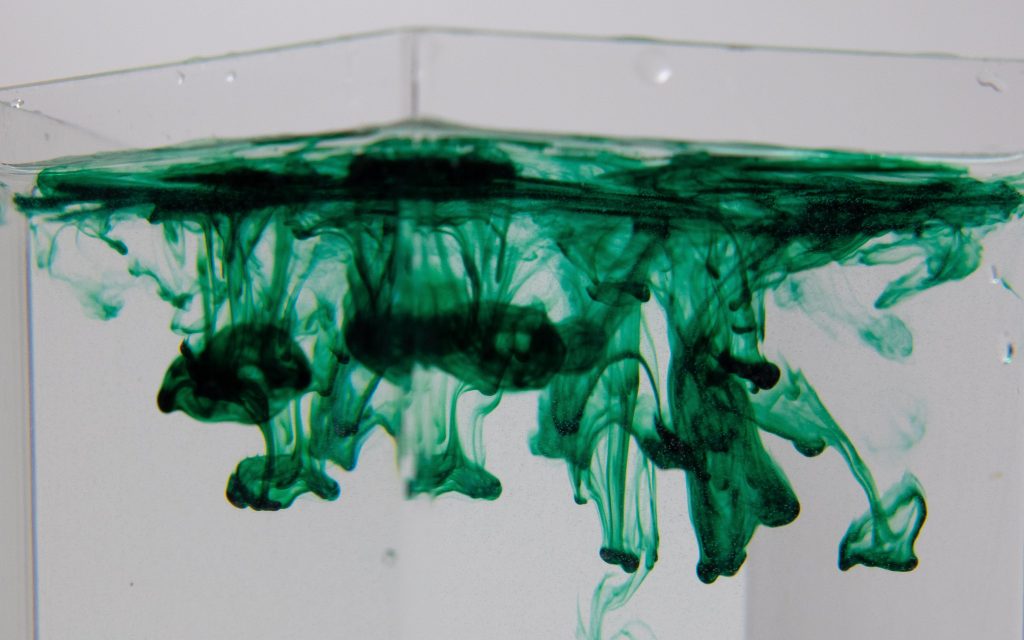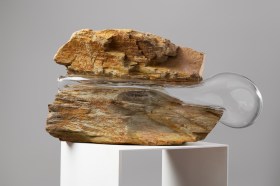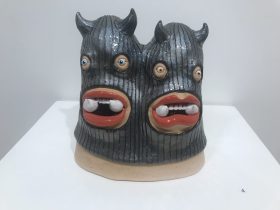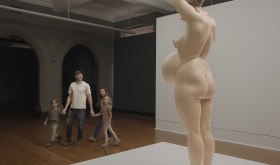There remains a persistent purview that colonial art (a) matters still, outside of any anthropological or scientific mode as illustration, and (b) has the esteem to stand alone in a gallery setting, unshackled by the problematic histories of the artist, their kin and wealth by simply being placed in situ and in celebration.
The Cairns Art Gallery (CAG) is showcasing a vast collection of works by Ellis Rowan (1848-1922). The exhibition is presented in partnership with the Queensland Museum Network and the National Library of Australia, and was due to run until 10 December 2023, but has now been extended until 18 February 2024.
Rowan stands as one of the most immense figures contributing to formulating colonial-era insights into the natural world around them, which they (as colonisers) invaded so wantonly and blindly. This isn’t a negative reflection on any goodwill or talent she held, or the professional struggles Rowan herself endured as a woman in such an era. She no doubt is an historic artist in her forays and boasts an unquestionable mastery of technique.
Where the exhibition, Ellis Rowan: Colonialism and Nature Painting, hits short is not in its presentation of beautiful artworks of a master artist (nor its careful installation), but in its outright nostalgia for a colonial worldview. An exhibition titled Colonialism and Nature Painting may compel audiences to wonder if the exhibition or associated public programming would unpack what colonialism is and how “nature painting”, as a school of art, aided the false narrative supremacy of white indoctrination of Country (of flora and fauna) by perpetuating the Wilderness ideology favoured in the stead of terra nullius. But this isn’t the case.
The exhibition merely frames and lauds Rowan’s groundbreaking work and placed great emphasis on her family heritage as colonial land holders and cattle barons in Australia and across other historically colonial Commonwealth states, as some form of drawcard. Without so much as a peep behind the curtain to Rowan’s family’s skullduggery in amassing their vast empire across First Nations’ Sovereign land.
The ironic thing is the number of native species threatened and habitats destroyed by the network of pastoralists that the artist’s family were members of – species and habitats that the artist captures and represents – is scarcely a side note. An exhibition about colonialism and native wildlife, void of a First Nations artistic response in juxtaposition, is a narrow view. An exhibition of this nature, to even be planned for the year we were all anticipating to be one when opposing ideations of what Australia was and is would come crashing in waves over us all, is a shortsighted approach to programming (perhaps instigated due to the more drudge business of loan calendars and availability of works, space and funding).
The latter points could well have been buoyed with Cultural, First Nations relevance, at the very least, in the public programming elements of the exhibition. Alas, also no. As public offerings, audiences were encouraged to learn how to paint birds and plants by non-Indigenous practitioners (don’t get me wrong, I love the works of Julie McEnerny and Joris De Raedt). However, with First Nations artists such as Brian Robinson, Heather Wunjarra Koowootha and Melanie Hava (all of whom excel at “nature painting”), it seems an oversight for CAG to overlook our artists’ Sovereignty in this approach to perceiving and documenting the natural world of Australia. It should be acknowledged that each of these three artists have had generous inclusions in CAG programming, though as a separate approach to such subject matter, rather than as an intrinsic one.
Read: Exhibition review: Melanie Hava: Bugan Mungan, Cairns Art Gallery
Zooming out to look at the Cairns cultural landscape, CAG’s only viable competition, NorthSite Contemporary Arts, also recently lauded white perspectives of Sovereign Soil. I encourage you to take this observation without judgement, as the works of recent exhibitions by Claudine Marzik (Undara Paintings) and Jamie Cole (Welcome to Paradise) are incredible. However, the artistic emphasis on creating works so responsive to space and place is one which begs a similar focus in First Nations exhibitions and promotions.
Both galleries routinely and admirably incorporate First Nations artists within their annual programming and it’s clear there’s a membership push within both to see a more expansive calendar that complements a diversified selection of mainstream artists. Yet, the framing of First Nations’ artistic responses to Country, space and place is relegated to curios of a place or time just beyond the comprehension of modernity and mainstream societies. Where Cole’s and Marzik’s exhibitions are seen as active commentaries of the contemporary landscape, First Nations works are housed very much within the paradigm of unintegrated programming and bargaining between cultural significance versus commercialisation.
The opportunities for cross-cultural responses to Country are still awkward spaces for artists and galleries to venture into. Essays and public talks where non-Indigenous artists and their works reflect Country are not positioned or discussed between them and First Nations Traditional Owners, is a slippery slope for advocating a free-for-all renaissance of Country being “up for grabs”.
The sacred stories of Undara’s lava tubes are, admittedly, not encroached upon by Marzik’s works. But then, given Undara is situated on a former cattle station and is held in freehold title not offered for hand-back, but rather, mutual tourism ventures with Traditional Owners, it calls into question any non-Indigenous artists’ legitimacy to collect Country in this manner.
First Nations artists are expected to include some hark to Culture, Lore and “ancientness” in how we see and paint Country. Landscape artworks for their own sake is not yet a freedom of expression the markets allow First Nations artists – we simply must back ourselves by providing an extensive amount of Indigenous Cultural and Intellectual Property and personal, often traumatic, histories as to why we have authority to depict this Country or that Country. We stay away from depicting other people’s Country.
Read: Are you an imposter?
Do white artists have a place on Country, to paint our Country and to make [comments] on society today, without our intrinsic experience? I’d say “yes” but only with consideration and collaboration. Collaboration in at least exploring the academic and philosophical themes, and by receiving direct permissions from Traditional Owners. As for collaborative arts practices more generally, this space is still up for debate and is at the instinct and welcome of First Nations artists.
The approach to colonial formats that CAG itself presents in Rowan’s exhibition is at odds with the more encompassing work done to decolonise spaces and perspectives across the arts more widely. Especially for exhibitions tagged with “colonialism”.
Arts institutions simply must be more imaginative and avid in how they link First Nations narratives, review or participation in non-Indigenous telling of stories of Country and totemic species.
This isn’t about admonishing white artists and saying they have no agency or room to exhibit, it’s about encouraging a broader critical response framework and artistic/academic deciphering of old views. This no doubt would grant greater stock in historical surveys, such as Ellis Rowan: Colonialism and Nature Painting in its attempt to leapfrog relevance through time.
Ellis Rowan: Colonialism and Nature Painting runs at Cairns Art Gallery (CAG) until 18 February 2024. Free entry.
This article is published under the Amplify Collective, an initiative supported by The Walkley Foundation and made possible through funding from the Meta Australian News Fund.





